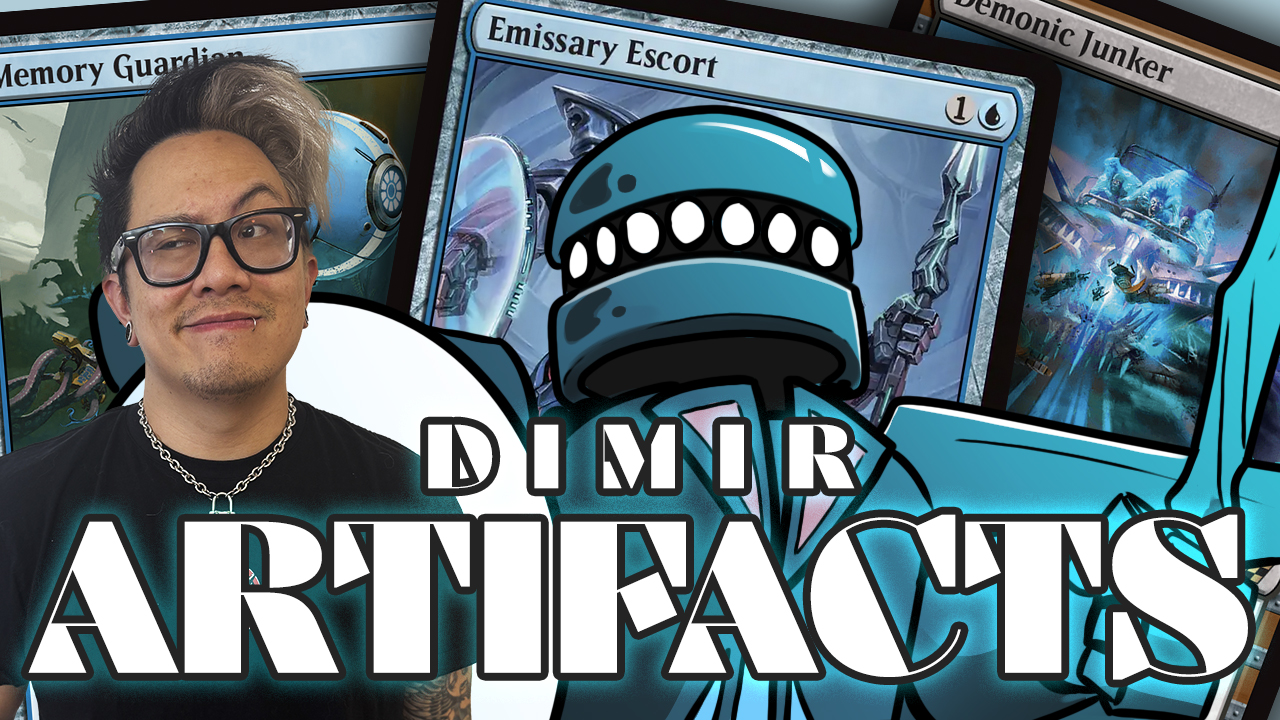Brewer's Minute: How Many Colors?
Hey, everyone. It's time for another Brewer's Minute. This week, we had an interesting question on the podcast asking if building five-color control in Modern would be possible, and while the answer is yes, the mana base can support five colors, the bigger question of what it costs to add a color to a deck and when it's right to do so is actually pretty interesting, so that's what we'll be talking about today!
Don't forget: if you enjoy the series (and haven't already), make sure to subscribe to the MTGGoldfish YouTube Channel!
Transcript
So, how do you choose what colors and how many colors are going to be in your deck? When you put an additional color in your deck, what you are basically doing is trading consistency for power. Here's what I mean. Let's say you are a mono-green deck. Your deck is going to be super consistent, since all of your cards (and lands) are one color, which means it's essentially impossible to get color screwed. On the other hand, mono-green is not good at everything, so your power level is going to be a bit lower than if you had an additional color in your deck. For example, green is notoriously bad at killing creatures (although it has improved a bit recently with the fight mechanic), so a lot of the time, it will be worth it to add another color to your deck to get more raw power.
What happens when you go from mono-green to green-red (for example) is that you are trading a little bit of consistency (color screw is now a possibility) for more power; plus, you solve some problems for your deck (in this case, the lack of interaction and ways to deal with your opponent's creatures). The downside, of course, is that every once in a while, you will lose games because your mana doesn't work out perfectly, but ideally, the percentage points you lose by being less consistent are outweighed by the percentage points you gain from your increased power level.
The same thing is true of adding a third, fourth, and fifth color, although once you get to three or more colors, each color you add hurts your consistency much more than the last (for example, let's say going from one color to two colors makes your deck 5% less consistent. If each color added hurts your consistency equally, you'd think that playing three colors would make your deck 10% less consistent and four would be 15%, but in reality, it's probably more like three colors makes your deck 15% less consistent and four colors makes it 35% less consistent). As such, once you move beyond two colors in Standard and three colors in Modern, you really need a good reason to make the change. Basically, at some point, the power you gain doesn't make up for the consistency you lose and adding a color is the wrong choice.
Of course, this is dependent on the format you are playing and the mana base available in the format. A year ago, you could easily play five colors in Standard and still have a consistent manabase. Today, if you go beyond three colors, you better plan on having additional color fixing like Prophetic Prism or Servant of the Conduit. Anyway, let's look at a real-world example.



In Standard, almost all of the best energy cards are green, but pretty much no one plays Mono-Green Energy, even though that would be the most consistent build of the deck. The problem is, as we mentioned before, that the mono-green build of the deck would have a hard time getting past opposing blockers or dealing with opponents' threats. As a result, players quickly realized that adding red to the deck for cards like Harnessed Lightning and Shock increased the power level of the deck enough that it was worth getting color screwed on occasion.
Later, players realized they still had a problem: while GR Energy had good creatures and good removal, it didn't really have a good way to protect its combo. As a result, many players added another color—blue—for access to Negate and Dispel in the sideboard. Once again, the consistency of the deck dropped—you'll have hands where you get stuck with Negates but don't have blue mana—but the gains in power make it worth the risk.
On the other hand, very few players had added a fourth (let alone a fifth) color to their green-based energy decks. While both black and white have some really powerful cards that could work well in the strategy, the amount of power these cards would add to the deck isn't enough to make up for the loss of consistency, especially considering how adding additional colors has increasing returns of less consistency.
Conclusion
There really isn't a right or wrong answer to how many colors you should play in your deck. Instead, the most important thing is to have a reason for the decisions you make in deck building. If you decide to add an extra color to your deck, make sure you have a good reason or are solving a significant problem. Also, double check that you don't have access to an increase in power (or problem solution) in the colors you are already playing (this is one of the biggest reasons we don't see more four- / five-color control decks in Modern; once you get to three colors, you pretty much have access to everything. Even though Path to Exile might be slightly better than a removal spell in Grixis Control, Path to Exile isn't enough better than the next-best on-color option to make the consistency drop worth adding it).
Anyway, that's all for today. Leave your thoughts, ideas, opinions, and suggestions in the comments, and you can reach me on Twitter @SaffronOlive or at SaffronOlive@MTGGoldfish.com.













